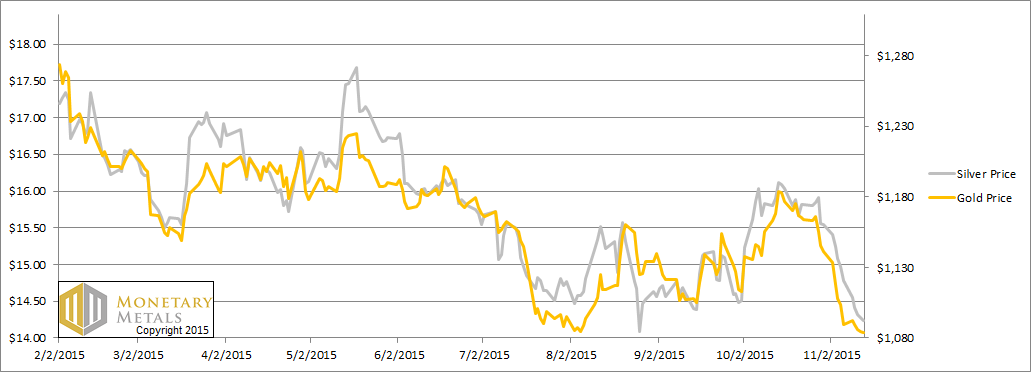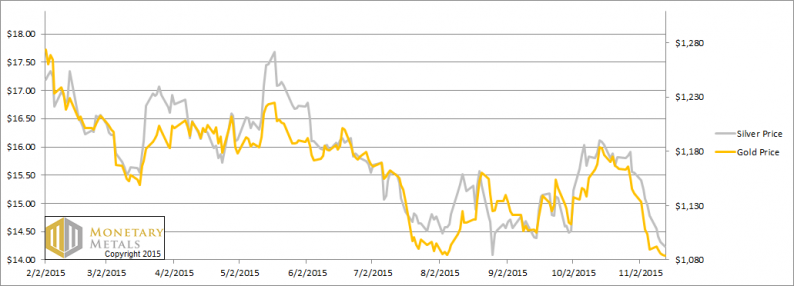In gold terms, the dollar went up a small 0.15 milligrams gold. The price of the dollar in silver went up considerably more as a percentage, 0.08 grams to 2.18g. Most people would say that gold went down and silver went down (though we continue to ask why should the prices of the monetary metals be measured in terms of the unstable dollar).
As always, we’re interested in one thing: did the fundamentals change, or did speculators sell off a bit more?
We call such price changes unimportant. That is not to say that it doesn’t matter to someone betting on the price to move in the opposite direction! We’re simply saying that not all price moves affect the fundamentals. Some do, some don’t.
Read on for the only true picture of supply and demand in gold and silver…
First, here is the graph of the metals’ prices.
The Prices of Gold and Silver

We are interested in the changing equilibrium created when some market participants are accumulating hoards and others are dishoarding. Of course, what makes it exciting is that speculators can (temporarily) exaggerate or fight against the trend. The speculators are often acting on rumors, technical analysis, or partial data about flows into or out of one corner of the market. That kind of information can’t tell them whether the globe, on net, is hoarding or dishoarding.
One could point out that gold does not, on net, go into or out of anything. Yes, that is true. But it can come out of hoards and into carry trades. That is what we study. The gold basis tells us about this dynamic.
Conventional techniques for analyzing supply and demand are inapplicable to gold and silver, because the monetary metals have such high inventories. In normal commodities, inventories divided by annual production (stocks to flows) can be measured in months. The world just does not keep much inventory in wheat or oil.
With gold and silver, stocks to flows is measured in decades. Every ounce of those massive stockpiles is potential supply. Everyone on the planet is potential demand. At the right price, and under the right conditions. Looking at incremental changes in mine output or electronic manufacturing is not helpful to predict the future prices of the metals. For an introduction and guide to our concepts and theory, click here.





![Dow[n] Behind Enemy Lines](https://www.riceoweek.com/wp-content/uploads/2018/04/orig_cd766-1-150x150.png)







Leave A Comment